How to properly analyze water from a well and disinfect it after testing
When using well water, the key issue is its quality.After all, it may contain chemical elements and pathogenic microorganisms that can cause harm to human health.
You can be confident in the safety of your household only after conducting research on its composition. Let’s look at how to properly analyze water from a well and disinfect it after testing in more detail.
The content of the article:
Where to go for analysis?
Water quality analysis services are provided by both public and private organizations. Each federal district has accredited laboratories that have the authority to conduct such studies.
These include:
- sanitary and epidemiological stations;
- geological laboratories;
- laboratories in regional offices of Vodokanal;
- in organizations related to geological exploration;
- laboratories at research institutes;
- accredited laboratories of Rospotrebnadzor.
The price depends on the type of research. The analysis can be shortened, aimed at identifying a specific group of substances, or complex, including chemical and microbiological research.

A biological group test will cost about one and a half thousand rubles.And the full assessment of the condition will be about three thousand. In private laboratories, the cost of the service may be more expensive.
When choosing a laboratory, you should be guided by two parameters:
- Location and distance of the organization – after all, the key to the reliability of the results is the speed of delivery of the sample to the laboratory.
- Positive reputation – it is a guarantee of the quality of research. Copies of attestations and certificates can be requested from the manager of the selected organization.
Having decided on the choice of laboratory, all that remains is to agree with the staff on the day of delivery of the sample so that the analysis is carried out as quickly as possible.
Sampling for analysis
To take a sample from a source and determine water quality, choose the off-season period. During the spring and autumn months, surface waters are most polluted. If they have the opportunity to penetrate into the mine, then they will definitely affect the composition.
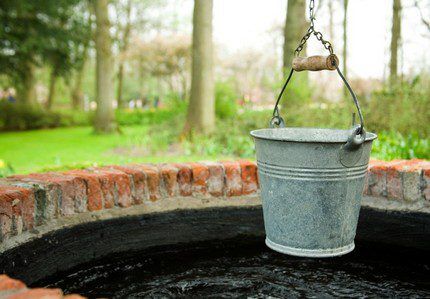
Water monitoring is carried out only after a 3-week period of operation of the hydraulic structure. During this period, the contamination of the mine that arose during construction work will subside, and the water will be partially purified.
To obtain reliable results from testing well water, it is important to collect the sample correctly.
To do this you need to adhere to a number of simple rules:
- The container for collecting liquid must be made of transparent, colorless glass or plastic. This can be a 2-liter bottle of mineral or distilled water, or a two-liter glass bottle.It is unacceptable to use eggplants from sweet and low-alcohol drinks for these purposes unless they are first washed without using detergents.
- When drawing water from a well with a bucket, try to let it go a little lower than usual. This decision is explained by the fact that closer to the surface the water may be stagnant, and at the very bottom it may contain silt impurities. Therefore, the best option would be the “golden mean”.
- Before filling the dishes, rinse them with selected water. Well water is poured into the bottle in a thin stream so that it flows smoothly down the inner wall of the container. Gravity supply will prevent the saturation of water with oxygen from the air, thereby preventing the occurrence of chemical processes.
- The bottle is filled with liquid up to the neck so that no air pocket forms in the container. If you are using a plastic bottle, before tightly capping it, lightly squeeze the sides of the container to squeeze out the air.
- Water taken from the well should be delivered to the laboratory within the next 2-3 hours. The faster the liquid gets to the laboratory, the more reliable the results will be. If this cannot be done, place the container on a shelf in the refrigerator - this will reduce the reaction rate.
The maximum storage period for the sample is up to two days. Temperature fluctuations should be avoided during sample storage.
Biochemical processes occurring in the selected sample can affect changes in the composition of the liquid. To prevent this, it is advisable to wrap the bottle with the selected liquid with a piece of dark fabric or polyethylene that will not let the sun's rays through.
Please include a note with your well water bottle. In it, indicate the location (address), type of source and the exact date of water collection.
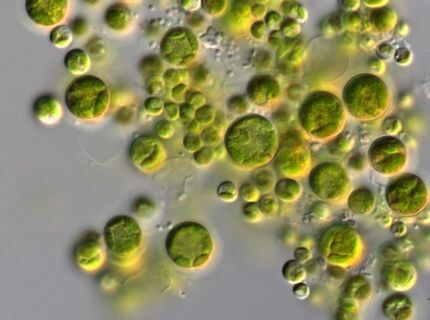
Key quality indicators
You can get a complete picture and determine how suitable water from a well is for human consumption by performing a comprehensive analysis, which consists of two parts - chemical and microbiological research.
General chemical analysis
Chemical analysis allows us to determine whether the water complies with current sanitary rules and regulations (SanPiN 2.1.4.1074-01). Well water quality standards establish the maximum permissible amount of substances, as well as its sanitary and organoleptic characteristics.
In sanitary rules and regulations, three groups of requirements are imposed on surface water that “feeds” a well: physical-chemical, organoleptic and sanitary-parasitological.
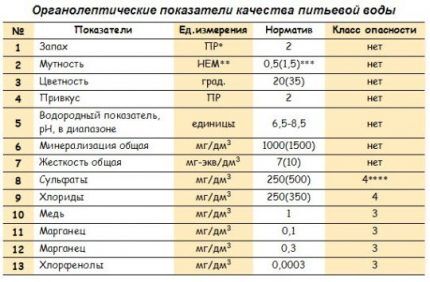
During the chemical analysis, the following indicators are determined:
- PH – pH value. The development and vital activity of microorganisms depends on it, as well as the more aggressive effect of water on concrete and metals. Normally, the hydrogen concentration should be 6-9 units.
- Turbidity – characteristic of relative water transparency. It depends on the presence of mechanical impurities in the form of suspended particles of silt deposits, algae, clay and microorganisms. Read more about the causes of cloudy water and methods for eliminating them in this material.
- Chroma. The color of water is related to the content of humic substances and iron compounds in it. The color intensity of the sample is determined based on the color scale. It can vary from a few units to tens of thousands of degrees.
- Rigidity – concentration of salt particles of magnesium and calcium in the liquid. An environment with increased hardness provokes the formation of scale on heating household appliances.
- General mineralization. It indicates the total content of minerals found in the sample. Mineralization is characterized by such an indicator as dry residue.
- Permanganate index – water oxidability. It is a measure of pollution of the aquatic environment with organic and oxidizable inorganic substances.
The basic research methodology involves assessment of 16 indicators, the extended one includes more than 30.
One of the main indicators of water when studying organoleptic qualities is its smell.
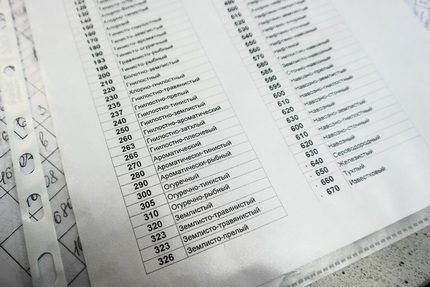
The smell and taste of surface water directly depends on the chemical composition of impurities, as well as the concentration of decaying plant debris and dead microorganisms dissolved in the water.
Microbiological components in the composition
In addition to a significant amount of chemical elements, well water also contains a huge number of both safe and harmful microorganisms. Microbiological analysis helps determine bacteriological and parasitological indicators.
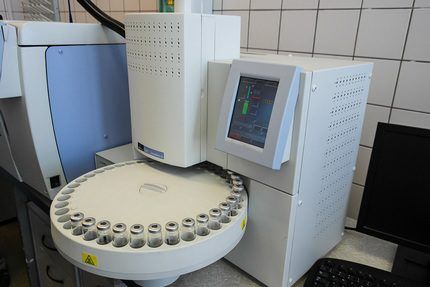
The suitability of well water is determined by three main parameters:
- Total microbial count – there should be no more than 50 of them per unit volume.
- Thermotolerant coliform bacteria – reveals the content of microorganisms hazardous to health. The indicator must be zero.
- Common coliform bacteria – indicator of fecal contamination. It must also be null.
Conducting a microbiological study is especially important if the well has a depth of within 10 meters. This is due to the fact that protozoa and various bacteria multiply much faster in surface waters.
In addition, well water should be checked for the concentration of fertilizers, surface detergent components and petroleum products. These substances often enter the mine during heavy rainfall.
Methods for purifying water from impurities
Having received a protocol with the research parameters and indicating the maximum permissible values in accordance with SanPiN, they proceed to choosing a method for properly disinfecting the water in the well and purifying it of impurities. The choice of method depends on the cause of contamination.
But in any case, before chemical treatment and installation of filters, the well is mechanically cleaned.
Mechanical cleaning of the mine
The method involves cleaning the bottom and walls of the well by scraping off accumulated layers, followed by washing the structure.

Mechanical cleaning of a well shaft includes a number of main stages:
- Pumping water from the well. This can be done manually by scooping with a bucket or using drain pump. But it is worth considering that it will not be possible to completely empty the mine - there will always be a small layer of water at its bottom.
- Clean the walls of the structure. It is better to do the work together: the first worker, dressed in a protective suit, lowers himself into the shaft, and the second one insures him on the surface and takes the filled buckets. It is convenient to clean the walls of the well from mud or silt deposits with a metal brush or scraper.
- Replace the bottom filter. To do this, layer by layer of silt-covered bottom filter stones are removed and removed from the mine.Instead of the old bottom filter, a new layer of fine crushed stone made of neutral materials such as jadeite or river pebbles is laid out.
- Strengthen the shaft rings and seal the seams. If cracks are detected, the defects are eliminated by covering them with cement mortar. If a displacement of the rings relative to each other is detected, the structure is strengthened by tightening the elements with metal brackets.
At replacing the bottom filter Instead of ordinary crushed stone, natural sorbents can be used. Petrified oil or shungite has proven itself in water purification systems.

Carbon-containing material helps eliminate not only organic contaminants, but also heavy metal compounds, including iron. In addition, the natural mineralizer enriches the water with potassium, sodium, silicon and sulfur through the process of ion exchange.
Disinfection of hydraulic structure walls
After mechanical cleaning is completed and leaks are eliminated, the structure is disinfected. It is performed by applying a disinfectant solution to the inner walls of the shaft, followed by treatment of well water.

The solution is prepared in a glass or enamel container and left under a tightly closed lid for 1-2 hours. For disinfection, only the layer of the mixture that floats closer to the surface is used.When using pure chlorine to obtain a 2% solution, the powder is diluted at the rate of 3-5 grams per 1 liter of liquid.
To apply the solution, it is convenient to use a wide brush and a fur roller. The entire surface should be covered evenly. The remaining solution is treated with the bottom filter.
Disinfection of well water
If the analysis of the liquid shows contamination with bacteria, after mechanical cleaning and disinfection of the walls of the hydraulic structure, it is necessary to disinfect the water. The easiest way is to disinfect with bleach.
To do this, the treated shaft is refilled with water. Then a more concentrated solution is poured into it, obtained by diluting 200 grams of powder per liter of water. To disinfect water, an average of 500 ml of solution is required per cubic meter of liquid.
Water treated with chlorine should not be consumed as food. Before putting the mine into operation, it will have to be emptied again and filled from scratch.

The neck of the well with the solution added to the water is covered with a lid wrapped in plastic film and left for a day. Such measures will help keep the mine cool, thereby preventing the volatilization of chlorine.
If, after filling the well, the smell of chlorine is still present in the water, it is better to pump out the liquid again and wait until the structure is filled with a new portion of groundwater.
Disinfection of the structure can also be carried out using special preparations such as Ecobreeze-Oxy or Aquatabs.

Concentrated preparations for obtaining disinfectant solutions are simply diluted with water and used using the same technology as when treating with bleach.
In the first 5-7 days after disinfection, it is advisable to boil well water before drinking it.
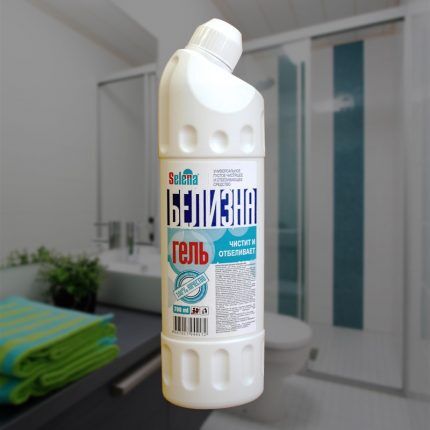
To obtain a solution of the required dosage, half a bottle of “Belizna” is diluted in a ten-liter bucket of cold water. The volume of solution required to process the contents of the entire shaft is determined at the rate of 1 liter of the resulting liquid per 1 ring of the well.
The resulting solution will not be inferior in quality and efficiency to its more expensive analogues.
There is a whole article on our website that is dedicated to water disinfection methods from the well, we recommend that you read it.
Decreased iron concentration
There are many ways to deferrize water. But they are all based on accelerating oxidative processes aimed at ensuring that iron passes into the trivalent state. In this form, iron-containing products precipitate as solid particles, which can only be filtered.
The easiest way to deferrize is to use strong oxidizing agents. They destroy iron compounds, transforming them into a trivalent state. Chlorine is most often used as an oxidizing reagent.The toxic reagent is capable of destroying not only iron compounds, but also divalent manganese, hydrogen sulfide, and many other substances of organic origin.
For iron removal, special filters are used, the inner walls of which are covered with a layer of oxidizing agent. In contact with the surface, iron reacts, as a result of which it becomes sediment and is easily cleaned by filter material.
Installation helps to successfully solve the problem reverse osmosis.
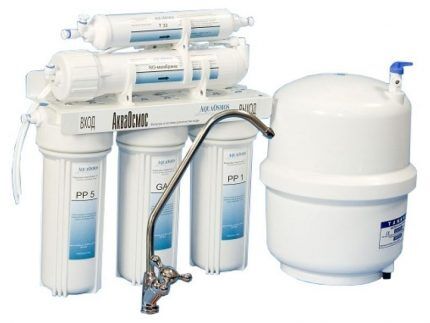
The aeration method has also worked well. It is carried out by introducing air into water using a compressor, which creates differences in atmospheric pressure. To do this, water in the well is sprayed with special installations through gushing or showering.
Removing hydrogen sulfide from liquid
Hydrogen sulfide is a waste product of anaerobic bacteria. Sulfur bacteria live at the bottom of the well, where oxygen does not flow.
Experts offer two ways to solve the problem:
- Physical – involves saturation of the liquid with air. Forced aeration helps destroy sulfur bacteria and additionally saturate the water with oxygen, making it more healthy. To implement this method, you will have to purchase expensive equipment.
- Chemical – involves the use of disinfectants and oxidizers: sodium hydrochloride, hydrogen peroxide or ozone. It provides the most complete degassing. Under the influence of oxidizing agents, hydrogen sulfide compounds transform into less active forms.
A liquid that has been chemically purified must undergo additional filtration through active carbon. To purify water, both carbon filters equipped with activated carbon and filters with granular filler are used.
Treatment of water with a solution of potassium permanganate helps eliminate the problem. Potassium permanganate powder is first diluted in a three-liter jar to obtain a concentrated solution of a rich purple color, and then poured into a well.
Subsequently, to prevent the formation of bacterial colonies that produce hydrogen sulfide, it is recommended to periodically “blow” with compressed air.
Conclusions and useful video on the topic
How to test water for harmful impurities:
Reagent-free method of water purification:
Which filter to choose to purify dirty water:
In the future, in order to maintain proper water quality in the well, an analysis of its aquatic environment should be carried out annually. This will allow you to control the quality of the water used, and if it deteriorates, take timely measures to improve the situation.
Do you have any questions about the topic of this article? Have you found any shortcomings in the material or want to give valuable advice to visitors to our site? Please leave your comments in the block below the article.




I actually had an interesting case. I decided to take water samples for a full analysis, went to the SanEpidemological Station in the city, where this service turned out to be paid, and also time-consuming. A friend turned up; he is the director of a restaurant; as part of their contracts, they provide water samples for free several times a month. So I submitted my samples through him. The results are given to them quickly, they are ready within a week.The water turned out to be normal both in iron content and in the quantitative composition of other elements. So we are calm now.
In our region, the water in the depths is the purest, but I still wouldn’t risk trusting the advice of the OBS (one grandmother said). Before using the well for drinking and cooking, I also tested the water. Private traders have offered their services many times, but somehow I trust the Sanitary and Epidemiological Inspectorate more. But the fact that I took a sample in the summer, after reading it, I thought about it... Now it’s too late, probably, it’s worth going again in the spring. God protects those who are careful, as they say.
As I understand it, the water needs to be taken to a laboratory for analysis, but how much will it cost? And questions about cleaning the well itself: at what time of year is it better to do this than to clean the plastic rings?
Hello. You should look at the offers in a specific region. From 100 rubles (for minimal research) to over 5000 (for a full range of testing). It also depends on the usefulness of the check - selective or complete. The application execution time is on average 5 working days for a complete verification of all indicators. But again, I note that these are not critical prices/deadlines. Find out about offers in your city.
Cleaning should be done as planned 1-2 times a year - in the fall in mid-September or in the spring at the beginning/end of May, when the snow and talinki have already melted and the groundwater level is quite low. There is an opinion that this should be done in winter, but this is an incorrect interpretation of the words of digging experts.If the well is the only source of water supply and you notice that the water has acquired a strange color/aroma/consistency, then we clean it immediately.
Also watch a useful video on cleaning Here. Good luck!